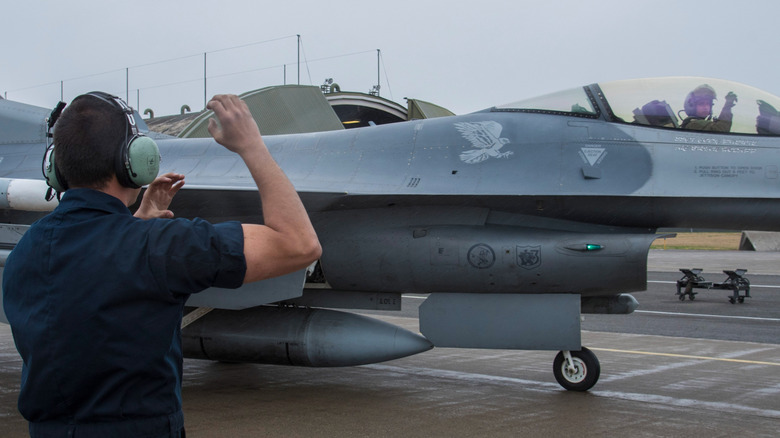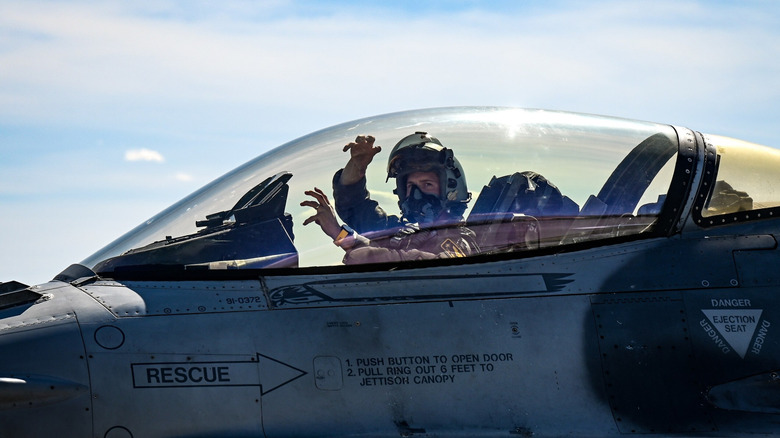Why Do Fighter Pilots Give The 'Claw' Hand Signal? Here's What It Means
As so many who have served in the military will attest, the sense of togetherness is absolutely paramount. You and your comrades are part of something vitally important to the defense of a nation, and that's an enormous thing. In a live combat situation, you might be on the ground, dependent on your allies above in their jets to support you. In other situations, the reverse will be true. There's a great sense of pride that comes with serving together, and close bonds are inevitable.
In the U.S. Air Force, one of the largest Air Forces in the world, squadrons have their mascots, which help build this sense of team spirit. They'll often be animals like big cats, which perfectly evoke that sense of agility and power that's pivotal to a fighter squadron. One thing lots of cat species have in common, from panthers to adorable little calicos, is claws that you really wouldn't want to be on the receiving end of.
Squadrons become super attached to their mascots and everything they represent, and seek to express that. There's a quick and easy way to do this in the rush to prepare for takeoff: A hand signal. Misawa Air Base reports that the 13th Fighter Squadron has a panther as a mascot, and that it's a tradition for the squadron to utilize the time-honored 'claw' hand signal. It doesn't attribute any single meaning to the gesture, but the sentiment is obvious: It's a "go, panthers!" motion, a gesture of solidarity and comradeship, a proud tradition like a secret handshake. It's not exclusive to the 13th fighter squadron, however, as you'd probably expect from such a broad and simple gesture. There's a symbolic importance to it, and one that's shared by those who pilot and service the jets alike.
Claws and other airplane hand signals
With tigers boasting some of the largest and most fearsome claws around, it's little surprise that the majestic creature has also inspired a claw hand signal that fighter pilots are fond of displaying. This motion, deemed the "Tiger, Tiger," is sometimes used by service people on the ground to indicate to a pilot in the vehicle that they are cleared to take off. It's a more elaborate "go ahead," affirmative action, rather like a thumbs-up.
It's a sort of catch-all action that expresses that group spirit, all in all, not requiring a specific, defined meaning. Needless to say, though, there are times when fighter pilots or ground staff will have to pass along very specific messages quickly, and the most efficient means of doing so is through some common Air Force hand signals utilized by the ground crew. One critical area in which this is performed is in communication between a pilot in a jet and ground staff, as mixed signals when an aircraft is on the ground can be as disastrous as when it's in the air. This is why those large batons you may have seen during aircraft landings are employed, along with suitably wide and deliberate motions on the holder's part.
The Naval Safety Command notes that hand signals are used to express all sorts of things in all sorts of scenarios that may arrive. Should the tow bar of a tow tractor require repositioning, for instance, a circular motion from the director followed by a marked point in the correct direction quickly makes plain to the driver exactly what's required, without a time-consuming conversation or the risk of a shouted series of instructions being misinterpreted.

